Request Demo
Last update 08 May 2025
Kunming Medical College No. 1 Attached Hospital
Hospital|Yunnan Sheng, China
Hospital|Yunnan Sheng, China
Last update 08 May 2025
Overview
Related
100
Clinical Trials associated with Kunming Medical College No. 1 Attached HospitalChiCTR2500101270
Multicenter Clinical Epidemiological Study of Neonatal Respiratory Failure
Start Date01 Jun 2025 |
Sponsor / Collaborator |
ChiCTR2500099446
Effects of Multiple Exposures to General Anesthesia during Infancy on Anxiety-like Behaviors and Gut Microbiota in Children
Start Date01 Apr 2025 |
Sponsor / Collaborator |
NCT06822088
Effects of Esketamine on Oxygenation and Quality of Recovery in Patients Undergoing Thoracoscopic Surgery
A total of 126 patients undergoing elective thoracoscopic surgery under general anesthesia were randomly divided into three groups: normal saline group (Group C), dexmedetomidine group (Group D), and esketamine group (Group E),with 42 patients in each group.In Group C,an equal volume of normal saline was continuously infused. In Group D,a loading dose of dexmedetomidine (1 μg/kg) was administered 10 min before induction of anesthesia, followed by a continuous infusion at a rate of 0.4 μg·kg-1·h-1 until 30 minutes before the end of the surgery. In Group E, 0.2mg/kg esketamine was infused intravenously before the induction of anesthesia for 10 min, and then maintained at 0.15 mg·kg-1·h-1 until 30 minutes before the end of the surgery. The primary outcome measures of this study were the oxygenation index (OI) at the following time points: before one-lung ventilation (OLV) (T1), 30 minutes after OLV initiation (T2), and 60 minutes after OLV initiation (T3). The secondary outcome measures included: (1)The duration of OLV, blood loss, fluid infusion volume, the dosages of propofol, remifentanil and vasoactive drugs(ephedrine and atropine) were recorded in each group.(2)Heart rate (HR) and mean arterial pressure (MAP) were recorded at the following time points: upon entering the operating room (T0), before OLV (T1), 30 minutes after OLV initiation (T2), 60 minutes after OLV initiation (T3), before extubation (T4), and 5 minutes after extubation (T5).(3)Blood gas anlaysis parameters,airway plateau pressure,tidal volume and positive end-expiratory pressure were recorded from T1 to T3,and dynamic lung compliance and intrapulmonary shunt fraction were calculated.(4) White blood cell counts, neutrophil percentage,and C-reactive protein (CRP) levels were recorded preoperatively and 24 hours postoperatively.(5)Postoperative pain was evaluated using the visual analogue score (VAS) at 2, 6, 12, and 24 hours after surgery, and the number of patients requiring rescue analgesia in each group was recorded. The occurrence of postoperative adverse reactions and postoperative pulmonary complications (PCCs) within one week after surgery were recorded. The postoperative quality of recovery was evaluated using the QOR-15 scale at 24 and 48 hours after surgery,and the postoperative hospital stay was recorded.
Start Date01 Mar 2025 |
Sponsor / Collaborator |
100 Clinical Results associated with Kunming Medical College No. 1 Attached Hospital
Login to view more data
0 Patents (Medical) associated with Kunming Medical College No. 1 Attached Hospital
Login to view more data
264
Literatures (Medical) associated with Kunming Medical College No. 1 Attached Hospital01 Jul 2025·Journal of Affective Disorders
Analysis of maintenance pharmacotherapy in Chinese bipolar disorder patients: Guideline concordance and adjunctive medication use
Article
Author: Zhu, Yuncheng ; Li, Mingli ; Pan, Miao ; Fang, Yiru ; Li, Wenfei ; Wu, Chuangxin ; Chen, Xiuzhe ; Li, Na ; Gan, Zhaoyu ; Sun, Jing ; Wang, Zuowei ; Wang, Yumei ; Hong, Liu ; Hu, Shaohua ; Zhou, Jia ; Xu, Guiyun ; Zhang, Jian ; Chen, Zhiyu ; Wu, Haishan ; Zhang, Yong ; Ma, Yantao ; Li, Xiaohong ; Lin, Jiansen ; Wang, Xiaoping ; Jiao, Zhian ; Li, Yang ; Qin, Yan ; Chen, Jingxu
01 Feb 2025·Zhonghua nei ke za zhi
[Expert consensus on visualized tele-round and quality control management based on the improvement of clinical practice ability].
Article
Author: Yang, R L ; Ma, X C ; Zou, T J ; Kang, Y ; Zhang, D ; Wang, J M ; Hu, Z J ; Fang, W ; Zeng, Z G ; Ye, G ; Peng, M L ; Chen, W J ; Lian, H ; Qu, F ; Li, J G ; Zhu, R ; Zhang, H ; Zeng, X Y ; Cai, S H ; Lyu, L W ; Chen, M M ; Zhu, Y ; Zhang, L P ; Chai, W Z ; Zhang, H M ; Chen, X K ; Hu, B ; Yin, M G ; Xu, W B ; Zhu, S H ; Liu, L X ; He, W ; Zhang, L N ; Sun, R Q ; Huang, Q B ; Wu, J ; Song, T J ; Ren, H ; Chao, Y G ; Yao, Y L ; Wang, X T ; Wang, J X ; Shen, F ; Zhang, Q ; Ding, X ; Li, S W ; Zhang, H T ; Tang, Y Q ; Yang, X J ; Shang, X L ; Liu, D W ; Yu, X Y ; Zhou, R ; Li, Y ; Feng, G ; Shanmu, S M ; Wu, W D
01 Dec 2024·Journal of Affective Disorders
Prevalence and correlates of non-suicidal self-injury among patients with bipolar disorder: A multicenter study across China
Article
Author: Li, Na ; Li, Wenfei ; Xu, Guiyun ; Chen, Jingxu ; Chen, Zhiyu ; Wang, Zuowei ; Zhang, Yong ; Li, Mingli ; Wu, Haishan ; Fang, Yiru ; Qin, Yan ; Ma, Yantao ; Jiao, Zhian ; Wang, Yumei ; Sun, Jing ; Hu, Shaohua ; Gan, Zhaoyu ; Zhong, Rongrong ; Zhang, Jian ; Chen, Xiuzhe ; Zhou, Jia ; Zhu, Yuncheng ; Li, Xiaohong ; Wang, Xiaoping ; Wu, XiaoHui ; Pan, Miao
1
News (Medical) associated with Kunming Medical College No. 1 Attached Hospital07 Feb 2025
More than 90% of Omvoh-treated patients who were in clinical remission at one year sustained it with two years of continuous treatment
Nearly 90% of patients who achieved endoscopic response at one year sustained it at two years
Omvoh is the first IL-23p19 antagonist to demonstrate multi-year, sustained efficacy and safety for both Crohn's disease and ulcerative colitis
INDIANAPOLIS, Feb. 7, 2025 /PRNewswire/ -- Eli Lilly and Company (NYSE: LLY) announced results from the VIVID-2 open-label extension study, which showed the majority of patients with moderately to severely active Crohn's disease receiving two years of continuous treatment with Omvoh® (mirikizumab-mrkz) achieved long-term clinical and endoscopic outcomes, including those (43.8%) with previous biologic failure. Data from this study will be presented at the Crohn's and Colitis Congress (CCC), being held from February 6-8, 2025 in San Francisco.1
Omvoh works to reduce inflammation within the gastrointestinal tract by targeting a specific protein, interleukin-23p19 (IL-23p19), which is a key contributor to intestinal inflammation.2,3
"Many people living with Crohn's disease have tried available therapies without success or have experienced a loss of efficacy with their treatment," said Edward Barnes, M.D., MPH, Associate Professor of Medicine in the Division of Gastroenterology & Hepatology, Co-Director of the Multidisciplinary Inflammatory Bowel Diseases Center at the University of North Carolina at Chapel Hill. "These positive, multi-year data can give health care providers confidence that Omvoh may help their patients achieve and maintain long-term outcomes, including intestinal healing."
Participants randomized to Omvoh in the Phase 3 VIVID-1 study who achieved endoscopic response after one year of treatment continued Omvoh maintenance treatment in VIVID-2. The following results were achieved based upon observed case analysis after two years of continuous treatment, including one year during VIVID-1:
Among patients who were in clinical remission at one year in VIVID-1, 92.9% maintained clinical remission at two years as measured by Crohn's Disease Activity Index (CDAI).
Among patients treated in VIVID-2, 87.6% maintained endoscopic response, defined by visible healing of the intestinal lining and measured by a ≥50% reduction from baseline in Simple Endoscopic Score for Crohn's Disease (SES-CD) total score.
Among patients who were in endoscopic remission at one year of treatment in VIVID-1, 78.6% maintained endoscopic remission at two years as measured by SES-CD ≤4 and ≥2-point reduction from baseline, with no subscore >1 in any individual variable.1
Additionally:
Among patients who were not in clinical remission by CDAI at one year, 60.8% gained clinical remission during the second year of treatment.
Among patients who were not in endoscopic remission at one year, 35.4% gained endoscopic remission during the second year of treatment.1
These results were also evaluated using a modified non-responder imputation method, presented in the About the VIVID Clinical Trial Program section below.
In VIVID-2, the long-term safety profile of Omvoh in patients with moderately to severely active Crohn's disease was generally consistent with the known safety profile of Omvoh. During the second year of continuous treatment with Omvoh, 6.8% of patients with endoscopic response at one year reported a serious adverse event and 0.8% discontinued treatment due to an adverse event.1
"Lilly is setting a high bar for sustained and durable treatment response for patients living with the profound impact of inflammatory bowel disease," said Mark Genovese, M.D., senior vice president of Lilly Immunology development. "These results build on the body of evidence that demonstrates Omvoh's ability to provide early meaningful improvement and long-term disease control with strong clinical, endoscopic and histologic outcomes."
Omvoh was approved by the United States Food and Drug Administration (FDA) for the treatment of moderately to severely active Crohn's disease in adults in January 2025. In December 2024, the European Medicines Agency's (EMA) Committee for Medicinal Products for Human Use (CHMP) issued a positive opinion for Omvoh for the treatment of adults with moderately to severely active Crohn's disease. Lilly has submitted marketing applications around the globe, including in Canada, Japan and China, with additional global regulatory submissions planned. Omvoh is also approved in 44 countries for the treatment of moderately to severely active ulcerative colitis (UC) in adults.
Omvoh is the first and only IL-23p19 antagonist to demonstrate long-term, multi-year, sustained efficacy and safety for both Crohn's disease and UC.
Omvoh has additional ongoing trials in Crohn's disease and UC, including studies to evaluate the long-term efficacy and safety of Omvoh in pediatric patients and adults, and a Phase 4 real-world evidence study to evaluate Omvoh's impact in patients with UC in clinical practice.
About the VIVID Clinical Trial Program
VIVID-1 was a Phase 3 randomized, double-blind, placebo-controlled 52-week study in adults with moderately to severely active Crohn's disease. Patients randomized to Omvoh received Omvoh 900mg by intravenous (IV) infusion at Week 0, Week 4 and Week 8 followed by a maintenance dose of 300mg by subcutaneous injection (SC) at Week 12 and then every 4 weeks (Q4W) for 40 weeks.2
Participants who completed VIVID-1, including the Week 52 endoscopy, were eligible for VIVID-2. In VIVID-2, the primary objective is to evaluate the long-term effect of Omvoh in clinical remission by CDAI and endoscopic response at Week 52 of treatment in VIVID-2 (totaling 104 weeks of continuous treatment). Safety is being assessed from the first dose in VIVID-2.1
Using a modified non-responder imputation method, among Omvoh endoscopic responders at year one, 81.8% maintained endoscopic response at two years, 86.9% maintained clinical remission at two years, and 72.5% maintained endoscopic remission at two years.1
About Omvoh®
Omvoh® (mirikizumab-mkrz) is an interleukin-23p19 antagonist indicated for the treatment of moderately to severely active ulcerative colitis and Crohn's disease in adults. Omvoh selectively targets the p19 subunit of IL-23 and inhibits the IL-23 pathway. Inflammation due to over-activation of the IL-23 pathway plays a critical role in the pathogenesis of inflammatory bowel disease.4
Omvoh® and its delivery device base are trademarks owned by Eli Lilly and Company.
Indications and Usage for Omvoh®
(mirikizumab-mrkz) (in the United States)
Omvoh is an interleukin-23 antagonist indicated for adults with:
Moderately to severely active ulcerative colitis
Moderately to severely active Crohn's disease
Important Safety Information for Omvoh (mirikizumab-mrkz)
CONTRAINDICATIONS
Omvoh is contraindicated in patients with a history of serious hypersensitivity reaction to mirikizumab-mrkz or any of the excipients.
WARNINGS AND PRECAUTIONS
Hypersensitivity Reactions
Serious hypersensitivity reactions, including anaphylaxis during intravenous infusion, have been reported with Omvoh administration. Infusion-related hypersensitivity reactions, including mucocutaneous erythema and pruritus, were reported during induction. If a severe hypersensitivity reaction occurs, discontinue Omvoh immediately and initiate appropriate treatment.
Infections
Omvoh may increase the risk of infection. Do not initiate treatment with Omvoh in patients with a clinically important active infection until the infection resolves or is adequately treated. In patients with a chronic infection or a history of recurrent infection, consider the risks and benefits prior to prescribing Omvoh. Instruct patients to seek medical advice if signs or symptoms of clinically important acute or chronic infection occur. If a serious infection develops or an infection is not responding to standard therapy, monitor the patient closely and do not administer Omvoh until the infection resolves.
Tuberculosis
Evaluate patients for tuberculosis (TB) infection prior to initiating treatment with Omvoh. Do not administer Omvoh to patients with active TB infection. Initiate treatment of latent TB prior to administering Omvoh. Consider anti-TB therapy prior to initiation of Omvoh in patients with a history of latent or active TB in whom an adequate course of treatment cannot be confirmed. Monitor patients for signs and symptoms of active TB during and after Omvoh treatment. In clinical trials, subjects were excluded if they had evidence of active TB, a history of active TB, or were diagnosed with latent TB at screening.
Hepatotoxicity
Drug-induced liver injury in conjunction with pruritus was reported in a clinical trial subject following a longer than recommended induction regimen. Omvoh was discontinued. Liver test abnormalities eventually returned to baseline. Evaluate liver enzymes and bilirubin at baseline and for at least 24 weeks of treatment. Monitor thereafter according to routine patient management. Consider other treatment options in patients with evidence of liver cirrhosis. Prompt investigation of the cause of liver enzyme elevation is recommended to identify potential cases of drug-induced liver injury. Interrupt treatment if drug-induced liver injury is suspected, until this diagnosis is excluded. Instruct patients to seek immediate medical attention if they experience symptoms suggestive of hepatic dysfunction.
Immunizations
Avoid use of live vaccines in patients treated with Omvoh. Medications that interact with the immune system may increase the risk of infection following administration of live vaccines. Prior to initiating therapy, complete all age-appropriate vaccinations according to current immunization guidelines. No data are available on the response to live or non-live vaccines in patients treated with Omvoh.
ADVERSE REACTIONS
Most common adverse reactions associated with Omvoh (≥2% of subjects and at a higher frequency than placebo) in ulcerative colitis treatment are upper respiratory tract infections and arthralgia during the induction study (UC-1), and upper respiratory tract infections, injection site reactions, arthralgia, rash, headache, and herpes viral infection during the maintenance study (UC-2). Most common adverse reactions associated with Omvoh in the Crohn's disease study (CD-1) (≥5% of subjects and at a higher frequency than placebo) are upper respiratory tract infections, injection site reactions, headache, arthralgia, and elevated liver tests.
Omvoh injection is available as a 300 mg/15 mL solution in a single-dose vial for intravenous infusion, and as a 100 mg/mL solution or a 200 mg/2 mL solution in a single dose prefilled pen or prefilled syringe for subcutaneous injection. Refer to the Prescribing Information for dosing information.
MR HCP ISI CD APP
Click to access provided
Prescribing Information
and
Medication Guide
. See Instructions for Use provided with the device.
About Lilly
Lilly is a medicine company turning science into healing to make life better for people around the world. We've been pioneering life-changing discoveries for nearly 150 years, and today our medicines help tens of millions of people across the globe. Harnessing the power of biotechnology, chemistry and genetic medicine, our scientists are urgently advancing new discoveries to solve some of the world's most significant health challenges: redefining diabetes care; treating obesity and curtailing its most devastating long-term effects; advancing the fight against Alzheimer's disease; providing solutions to some of the most debilitating immune system disorders; and transforming the most difficult-to-treat cancers into manageable diseases. With each step toward a healthier world, we're motivated by one thing: making life better for millions more people. That includes delivering innovative clinical trials that reflect the diversity of our world and working to ensure our medicines are accessible and affordable. To learn more, visit Lilly.com and Lilly.com/news, or follow us on Facebook, Instagram, and LinkedIn. P-LLY
Cautionary Statement Regarding Forward-Looking Statements
This press release contains forward-looking statements (as that term is defined in the Private Securities Litigation Reform Act of 1995) about Omvoh (mirikizumab-mrkz) as a treatment for people with moderate to severe Crohn's disease and reflects Lilly's current beliefs and expectations. However, as with any pharmaceutical product, there are substantial risks and uncertainties in the process of drug research, development, and commercialization. Among other things, there is no guarantee that planned or ongoing studies will be completed as planned, that future study results will be consistent with study results to date, that Omvoh will receive additional regulatory approvals, or that Omvoh will be commercially successful. For further discussion of these and other risks and uncertainties that could cause actual results to differ from Lilly's expectations, see Lilly's Form 10-K and Form 10-Q filings with the United States Securities and Exchange Commission. Except as required by law, Lilly undertakes no duty to update forward-looking statements to reflect events after the date of this release.
References
1 Barnes, EL, et al. Long-term efficacy and safety of mirikizumab following 104 weeks of continuous treatment for Crohn's Disease: results from the VIVID-2 open-label extension study. 2025 Crohn's and Colitis Congress. February 6-8, 2025.
2 Ferrante M, et al. Efficacy and safety of mirikizumab in patients with moderately-to-severely active Crohn's disease: a phase 3, multicentre, randomised, double-blind, placebo-controlled and active-controlled, treat-through study. The Lancet. 2024;404(10470):2423-2436.
3 Chang JT. Pathophysiology of inflammatory bowel diseases. N Engl J Med. 2020 Dec 31;383(27):2652-2664. doi: 10.1056/NEJMra2002697. PMID: 33382932.
4 Omvoh. Prescribing Information. Lilly USA, LLC.
SOURCE Eli Lilly and Company
WANT YOUR COMPANY'S NEWS FEATURED ON PRNEWSWIRE.COM?
440k+
Newsrooms &
Influencers
9k+
Digital Media
Outlets
270k+
Journalists
Opted In
GET STARTED
Clinical ResultPhase 3Drug ApprovalPhase 2
100 Deals associated with Kunming Medical College No. 1 Attached Hospital
Login to view more data
100 Translational Medicine associated with Kunming Medical College No. 1 Attached Hospital
Login to view more data
Corporation Tree
Boost your research with our corporation tree data.
login
or

Pipeline
Pipeline Snapshot as of 19 Dec 2025
No data posted
Login to keep update
Deal
Boost your decision using our deal data.
login
or
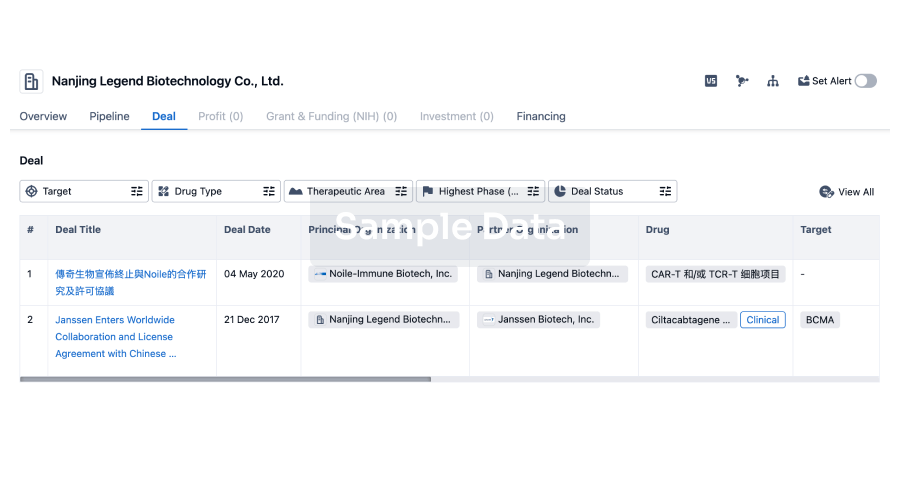
Translational Medicine
Boost your research with our translational medicine data.
login
or
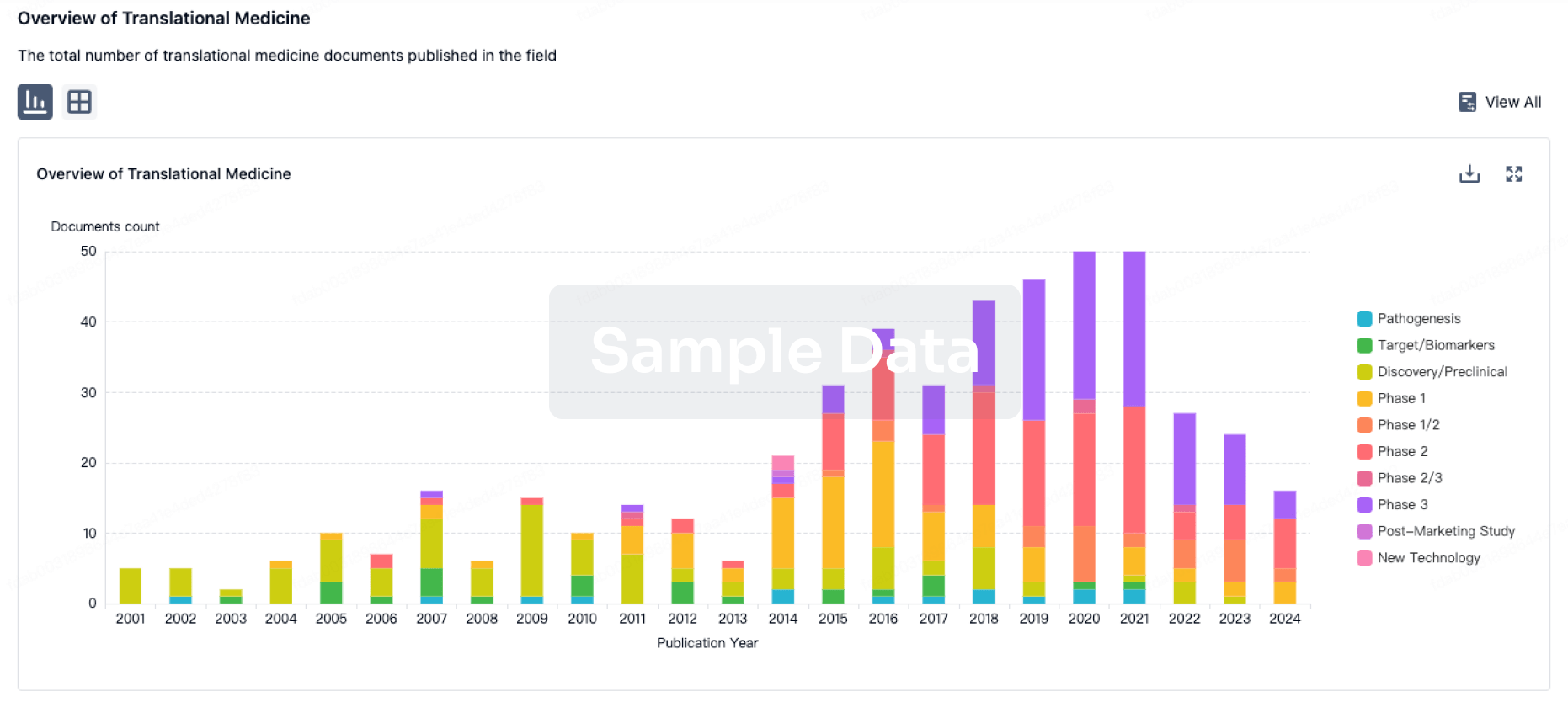
Profit
Explore the financial positions of over 360K organizations with Synapse.
login
or

Grant & Funding(NIH)
Access more than 2 million grant and funding information to elevate your research journey.
login
or
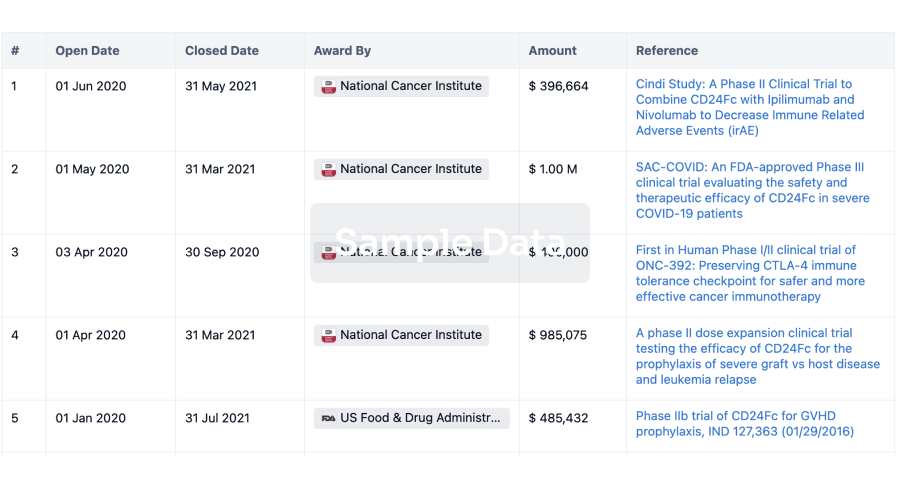
Investment
Gain insights on the latest company investments from start-ups to established corporations.
login
or
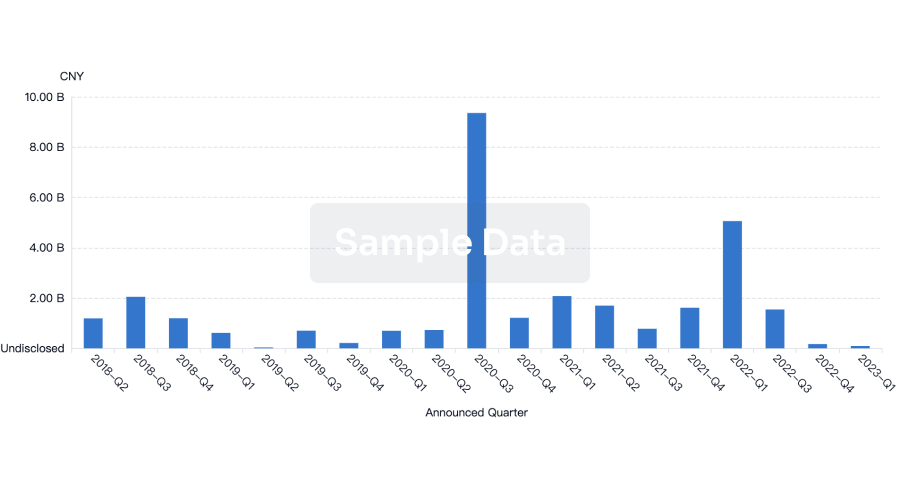
Financing
Unearth financing trends to validate and advance investment opportunities.
login
or
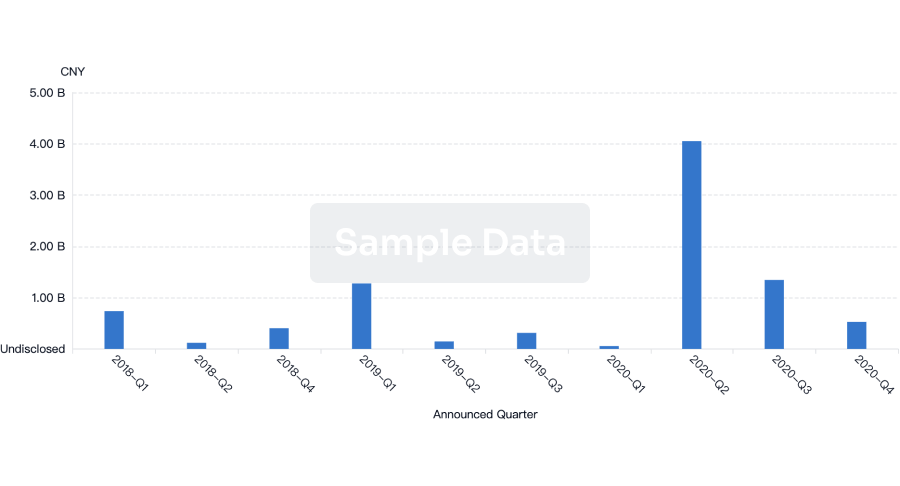
AI Agents Built for Biopharma Breakthroughs
Accelerate discovery. Empower decisions. Transform outcomes.
Get started for free today!
Accelerate Strategic R&D decision making with Synapse, PatSnap’s AI-powered Connected Innovation Intelligence Platform Built for Life Sciences Professionals.
Start your data trial now!
Synapse data is also accessible to external entities via APIs or data packages. Empower better decisions with the latest in pharmaceutical intelligence.
Bio
Bio Sequences Search & Analysis
Sign up for free
Chemical
Chemical Structures Search & Analysis
Sign up for free